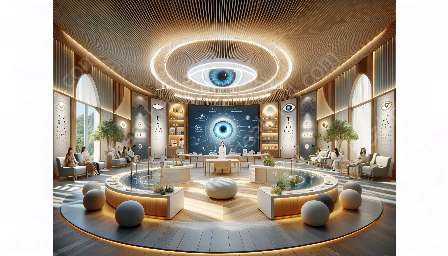Vision rehabilitation plays a crucial role in improving the quality of life for individuals who have experienced vision loss or impairment. It encompasses a comprehensive approach to address the visual, functional, and psychosocial needs of those affected, aiming to maximize their independence and participation in daily activities. This topic cluster aims to explore the various aspects of vision rehabilitation and its significance in promoting eye health and enhancing vision care.
The Importance of Vision Rehabilitation
Vision rehabilitation is essential for individuals who have experienced vision loss due to conditions such as age-related macular degeneration, diabetic retinopathy, glaucoma, or other ocular diseases. It also encompasses those who have undergone eye surgery, sustained traumatic eye injuries, or have congenital vision impairments. Vision rehabilitation is not solely about improving visual acuity; it focuses on enhancing overall visual function, including visual processing, spatial awareness, mobility, and activities of daily living.
The goal of vision rehabilitation is to empower individuals to adapt to their visual challenges, restore confidence, and maintain their independence. By facilitating access to appropriate services and support, vision rehabilitation programs aim to optimize functional vision and improve the overall well-being of individuals with visual impairments.
Components of Vision Rehabilitation
Vision rehabilitation involves a multidisciplinary approach, encompassing various components that address the diverse needs of individuals with visual impairments. These components may include:
- Comprehensive Low Vision Evaluation: A thorough assessment of visual function and residual vision to determine the individual's specific visual needs and potential for rehabilitation.
- Visual Skills Training: Techniques to improve visual perception, visual processing, and visual motor integration to enhance functional vision and daily activities.
- Orientation and Mobility Training: Instruction in safe and independent travel, wayfinding, and environmental accessibility to promote mobility and spatial awareness.
- Adaptive Technology: Training in the use of assistive devices, such as magnifiers, screen readers, and adaptive software, to facilitate computer access, reading, and other activities.
- Activities of Daily Living (ADL) Training: Strategies and adaptations to support independence in self-care tasks, home management, and personal hygiene.
- Psychosocial Support: Counseling, peer support, and adjustment to vision loss programs to address emotional and psychological aspects of vision impairment.
- Vocational Rehabilitation: Services to help individuals with visual impairments explore employment opportunities, acquire job skills, and gain workplace accommodations.
Integration with Eye Health Education and Promotion
Vision rehabilitation aligns with eye health education and promotion by raising awareness of the impact of vision loss and the available rehabilitation services. It emphasizes the importance of early detection, timely intervention, and ongoing support for individuals at risk of or experiencing vision impairment. Through education and outreach efforts, vision rehabilitation programs contribute to a greater understanding of visual disabilities and promote the inclusion and empowerment of individuals with visual impairments within their communities.
Furthermore, vision rehabilitation encourages collaboration with eye care professionals, including optometrists, ophthalmologists, and allied healthcare providers, to ensure a seamless continuum of care for individuals navigating vision loss. By fostering partnerships and promoting a holistic approach to vision care, vision rehabilitation strengthens the overall eye health ecosystem and enhances the delivery of patient-centered, integrated services.
Vision Care and Long-Term Management
Vision rehabilitation complements and extends the scope of vision care by addressing the long-term needs of individuals with visual impairments. While vision care focuses on diagnosing and treating ocular conditions, vision rehabilitation extends beyond medical interventions to provide ongoing support, resources, and training for individuals to effectively cope with and adapt to their visual challenges.
By integrating vision rehabilitation into the continuum of vision care, individuals with visual impairments receive comprehensive, coordinated services that encompass both medical and functional aspects of vision health. This integration fosters a paradigm shift from treating vision loss as a medical condition to embracing a holistic approach that prioritizes not only visual restoration but also functional independence and quality of life.
Empowering individuals with visual impairments through vision rehabilitation enables them to actively participate in their own care and engage in activities that are meaningful and fulfilling. It fosters resilience, independence, and self-management, ultimately leading to enhanced well-being and an enriched quality of life.
Conclusion
Vision rehabilitation is a vital component of comprehensive eye health care, promoting independence, inclusion, and empowerment for individuals with visual impairments. It encompasses a holistic approach that considers the diverse needs and goals of each individual, aiming to maximize functional vision, mobility, and quality of life. By integrating vision rehabilitation into the broader framework of eye health education, promotion, and care, communities and healthcare systems can effectively support individuals with visual impairments, enhancing their overall well-being and contributing to a more inclusive society.


